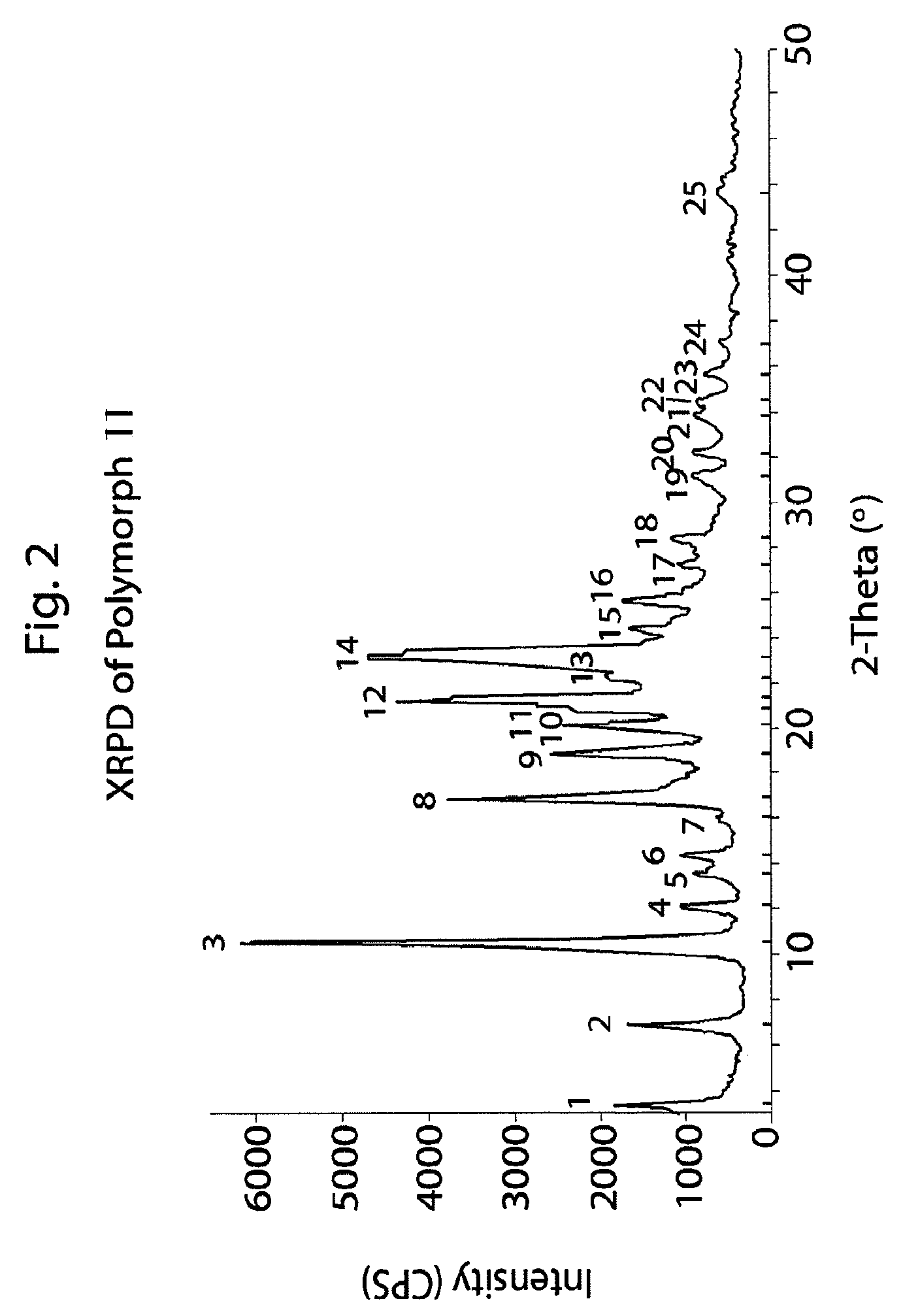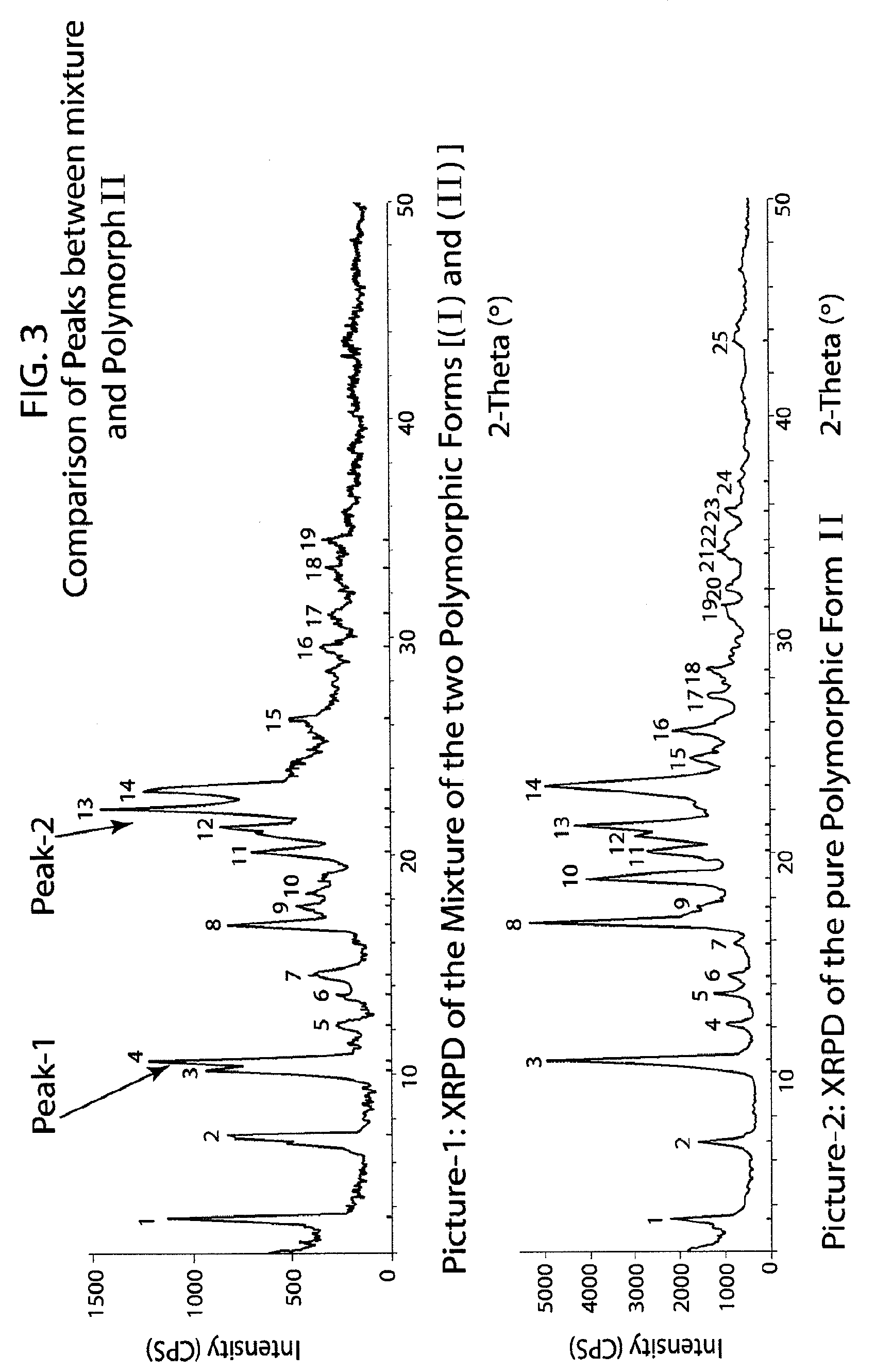Method of preparation of antiviral compounds and useful intermediates thereof
a technology of antiviral compounds and intermediates, which is applied in the field of preparation of antiviral compounds and useful intermediates thereof, can solve the problems of high cost and large volume of resin-bound triphenylphosphine, painful rash, and impracticality of the method of preparation for scale up purposes
- Summary
- Abstract
- Description
- Claims
- Application Information
AI Technical Summary
Benefits of technology
Problems solved by technology
Method used
Image
Examples
experimental examples
[0303]The specific examples herein described are not intended to be exhaustive or to limit the invention to the precise reagents, reaction steps or conditions disclosed. They have been chosen and described to explain the principles of the invention, and its application and practical use to thereby enable others skilled in the art to understand its teachings.
General Methods
[0304]Proton NMR (1H NMR) spectra were recorded on a Varian Mercury spectrometer at 400 MHz, using tetramethylsilane as an internal standard. Chemical shifts (δ) are reported in parts per million (ppm) and the coupling constants (J) are given in hertz. Signal splitting patterns are described as singlet (s), doublet (d), triplet (t), quartet (q), broad signal (br), doublet of doublet (dd), doublet of triplet (dt), or multiplet (m).
[0305]Thin Layer Chromatography (TLC) was carried out on silica gel GF254.
[0306]Melting points (mp) were determined using an XT4A digital melting point apparatus.
[0307]Optical rotations we...
example 1
Preparation of 3-((2R,4S,5R)-5-(Triphenylmethoxy)methyl)-4-hydroxy-tetrahydrofuran-2-yl)-6-(4-pentylphenyl)furo[2,3-d]pyrimidin-2(3H)-one
[0310]
[0311]A 5 L 3-neck flask was charged with 500 g (1.25 mol) of 3-((2R,4S,5R)-(4-hydroxy-5-(hydroxymethyl)-tetrahydrofuran-2-yl)-6-(4-pentylphenyl)furo[2,3-d]pyrimidin-2(3H)-one, and 2500 mL of pyridine. The mixture was stirred and to it at rt was added dropwise 508 g (1.5 mmol) trityl chloride dissolved in 120 mL of dichloromethane solution. After the addition, the mixture was stirred for 3-5 h at rt. The mixture was then quenched with 50 mL of water. The mixture was concentrated to dryness. The residue was redissolved with 5000 mL of dichloromethane. The organic solution was washed with brine, concentrated and used directly in the next step.
example 2
Preparation of 3-((2R,4S,5R)-5-((bis(4-Methoxyphenyl)(phenyl)methoxy)methyl)-4-hydroxy-tetrahydrofuran-2-yl)-6-(4-pentylphenyl)furo[2,3-d]pyrimidin-2(3H)-one
[0312]
[0313]A 50 L reactor was charged with 2.8 kg (7.03 mol) of 3-((2R,4S,5R)-4-hydroxy-5-(hydroxymethyl)-tetrahydrofuran-2-yl)-6-(4-pentylphenyl)furo[2,3-d]pyrimidin-2(3H)-one, 2.8 kg (35.4 mol) of pyridine and 22.4 kg of dichloromethane. The mixture was stirred and to it was added 2.86 kg (8.44 mol) 4,4′-dimethoxyltritylchloride (DMT-Cl) in 14.9 kg dichloromethane at room temperature (rt). After addition, the mixture was stirred for 0.5 h at rt. The mixture was filtered and the filtrate was washed with brine. The filtrate contained the desired product which was used directly in the next step.
[0314]Analysis was carried out on an isolated sample:
[0315]1H NMR (400 MHz, DMSO-d6) δ 8.70 (s, 1H), 8.27 (s, 1H), 7.60 (d, J=8 Hz, 2H), 7.40-7.23 (m, 9H), 6.92-6.89 (m, 4H), 6.89 (s, 1H), 6.14 (dd, J=6.6 Hz, 4.4 Hz, 1H), 4.43 (d, J=6.8 H...
PUM
| Property | Measurement | Unit |
|---|---|---|
| temperature | aaaaa | aaaaa |
| temperature | aaaaa | aaaaa |
| temperature | aaaaa | aaaaa |
Abstract
Description
Claims
Application Information
 Login to View More
Login to View More - R&D
- Intellectual Property
- Life Sciences
- Materials
- Tech Scout
- Unparalleled Data Quality
- Higher Quality Content
- 60% Fewer Hallucinations
Browse by: Latest US Patents, China's latest patents, Technical Efficacy Thesaurus, Application Domain, Technology Topic, Popular Technical Reports.
© 2025 PatSnap. All rights reserved.Legal|Privacy policy|Modern Slavery Act Transparency Statement|Sitemap|About US| Contact US: help@patsnap.com



